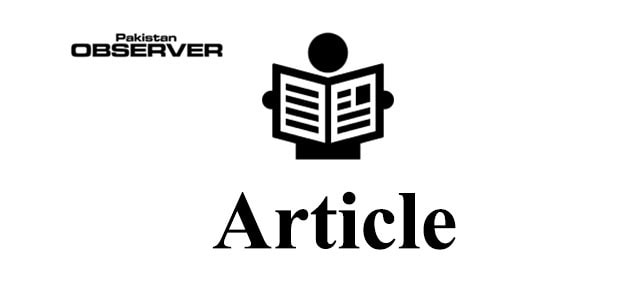More taxes and debt to stifle economic recovery
THE recent policy steps announced in Budget 2022-23 and afterwards point towards the aim for fiscal consolidation even at the cost of subdued growth.
Even the growth target of 5% is lower than the economic growth achieved during the past two years.
After imposing huge tax burden to collect Rs 7,004 billion in taxes, still the net revenue at Federal level (Rs 4,904) will not be enough to pay even just the interest payments (Rs 3,950 billion) and defence expenditure (Rs 1,523 billion).
The shortfall in budget will be covered with more borrowing, which will be in excess of Rs 3,100 billion.
There is very little amount allocated to Federal Public Sector Development Program (PSDP).
Interest payment will be more than five times as much as the total (PSDP).
There is almost a 30% increase proposed in interest payment.
It may rise further if policy rate is hiked, rupee depreciates and credit rating on foreign loans declines.
Even the allocations in PSDP include mainly the budget for divisions which are not directly related to development sector, especially education, health, poverty alleviation and social protection.
Budget for PSDP includes allocation for Cabinet Division, Establishment Division, Defence Division, Defence Production, Maritime Affairs Division, Narcotics Division, National History and Literary Division and Religious Affairs and Interfaith Harmony Division.
The budget for national health services, poverty alleviation, national food security and science has been reduced.
Budget for climate change, water resources and SDG supplementary funds has also been slashed.
The burden of pensions is often overlooked. A civil or military person retiring now and in future would get much greater pension than the person who started receiving pensions several years ago.
It is because the recent base salaries would be much higher than in the previous years. The whole civil administration budget is almost equal to the total pension which include military pensions too.
Privatization could bring in foreign direct investment and reduce the allocation of grants and subsidies for loss making state owned enterprises.
Even though, difficult steps are taken to reduce subsidies, but privatization is not yet on the agenda.
There is something to cheer about in the budget for civil and military bureaucracy with 15% rise in salaries and 5% rise in pensions.
But, small and medium enterprises and export-oriented industries do not have any major incentives.
Rise in interest rate to 13.75% together with multiple price hikes in utility prices including electricity, gas, petrol and diesel has created more problems for the industry as well as for the middle class.
Major tax burden will come in the form of indirect taxes (increase by 21.5%) and very little in direct taxes (increase by 17.9%).
The tax plan is regressive as direct tax to total tax ratio will decrease from 37.5% to 36.7%. Even in the income tax, most tax will be of the nature of corporate tax, tax on salaries or withholding tax deducted at source.
There is no effort, scheme or plan to bring undocumented sector in the tax net in a carefully targeted way.
On small retailers, a fixed tax is applied from Rs 3,000 to Rs 10,000 which will be collected in utility bills.
This will raise electricity bill by pushing it in higher slabs.Since line losses are huge in remote cities and villages, this lump-sum tax may further increase not only tax evasion, but line losses too.
There are incentives, but not much in the high-priority sectors. Filmmaking equipment can be imported without any import or custom duty and there is tax holiday for 10 years and 5 years for filmmakers and cinema houses.
On the other hand, there is no incentive for microenterprises, microfinance institutions, small and medium enterprises and even IT sector.
In fact, there is 0.25% tax imposed on IT exports.There are other incentives which are misplaced.
Solar panel loans are to be provided to people who are consuming less than 200 units of electricity.
Why would they want to take that loan if their consumption is low and they already fall in the low-tariff bracket.
Not-for-profit hospitals having more than 50 beds would be given free electricity. Many not-for-profit hospitals legally register themselves as not-for-profit, but their charges and fees are even higher than some private hospitals.
They run it like business. Without any filter and condition on charges, facilities and equipment, they are given this incentive to get free electricity if they can show 50 beds, no matter whether they are utilized or not.
The direct benefit which was accruing to families through National Sehat Card is withdrawn. Increased tax rate on banks is meant to recover back some part of interest paid to them.
Level of financial intermediation will further suffer through tight monetary policy and higher overall tax rate on banks.
Banks would look to safely park investments in sovereign instruments and forget private sector when government is keeping interest rate at 13.75% and income on banks is taxed at 42%, a successful recipe for crowding out and disintermediation.
Economic stability also depends on policy stability. Unfortunately, almost all previous programs have been reversed or significantly reduced in scale including Naya Pakistan Housing Scheme, Kamyab Jawan Program, Kisan Card and Cash-flow based SME loans.
—The writer is Project Coordinator & Editor, Islamic Economics Project, Editorial Advisory Board Member, Emerald International Journal of Islamic and Middle Eastern Finance and Management.










